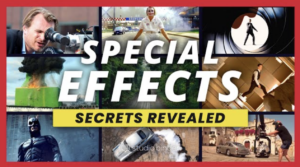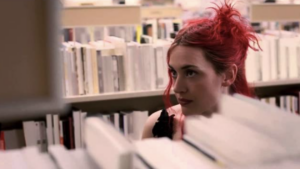pecial effects in film are a crucial component of modern movie-making. They have the power to transport audiences to fantastical worlds, create realistic portrayals of historical events, and add an emotional depth that enhances storytelling. In this article, we will explore what special effects are in film, the different types of special effects that exist, their history in cinema, and their impact on modern-day filmmaking.
WHAT ARE SPECIAL EFFECTS IN FILM?
Movie special effects explained
Special effects are an essential part of modern filmmaking. There are effects that wow the audience — “How did they do that?!” And then there are effects that no one even notices, those subtle visual enhancements that fly under the radar. In both cases, effects are what help create “movie magic.”
Before diving into why this is the case, let’s first define special effects in filmmaking.
SFX MEANING
What are special effects in film?
Special effects are techniques and technologies that create illusions or enhance visual elements in a movie. Otherwise noted as SFX, these effects can be either practical or digital, and are used to add visual interest, realism, or fantasy to a film. Practical special effects involve physical objects and techniques that are captured on camera during filming. Examples of practical effects include makeup, prosthetics, animatronics, miniatures, pyrotechnics, and more. These techniques have been used in filmmaking since its early days to create illusions such as disappearing acts, explosions, or transforming characters.
Digital special effects (also known as visual effects or VFX) rely on computer-generated imagery (CGI), motion capture technology, green screens, and digital compositing. All to create realistic or fantastical visuals that would be difficult or impossible to achieve with practical effects alone. Digital special effects have become increasingly prevalent in modern filmmaking due to advancements in technology and the ability to seamlessly blend them with live-action footage.
What are special effects in movies used for?
- Enhancing the appearance of characters and objects
- Creating realistic or fantastical environments
- Making impossible stunts possible
- Depicting otherworldly creatures and beings
SFX VS VFX
Types of Special Effects
Special effects in film can be divided into two main categories: practical and digital. Both types of special effects have their unique strengths and limitations, and filmmakers often combine them to achieve the desired effect. Let’s take a look at SFX vs VFX.
Practical Effects
Practical effects involve creating physical illusions on set using props, makeup, animatronics, prosthetics, miniatures, pyrotechnics, etc. These effects are often used to create a sense of realism or tangibility in a scene, and can be particularly effective for portraying physical objects such as explosions, creatures, or vehicles. Practical effects can also help actors get into character by providing them with tangible objects to interact with on set.
One of the biggest proponents of the use of practical effects is director Christopher Nolan. In Nolan’s best films from Inception to Dunkirk, Nolan opts for practical effects whenever possible. These range from iconic stunts, miniature models, and in the case of Inception — moving sets.
Check our analysis of how Nolan shot one of the most iconic scenes from Inception with practical effects.

How Christopher Nolan Shot the Iconic Inception Hallway Fight Scene • Subscribe on YouTube
However, practical effects can be costly and time-consuming to create, and may not always provide the level of control or flexibility that digital effects offer. Despite these limitations, many filmmakers continue to use practical effects for their unique aesthetic qualities and ability to create a sense of authenticity.
Visual Effects
Visual effects, often abbreviated as VFX, are a type of digital effect used in films and other media to create or enhance imagery that cannot be achieved through practical means. These effects can range from simple compositing of different elements to create a seamless shot, to complex simulations of physics, weather, or other natural phenomena.
Visual effects can also be used to create fantastical creatures, environments, or events that would be impossible to film in real life. Let’s take a look at another scene from Inception where Nolan actually opted to use VFX.
In this breakdown video, we analyze how and why the scene called for VFX and what it takes to recreate VFX in post-production.
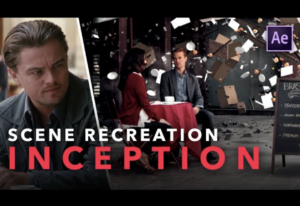
Inception VFX Breakdown • Subscribe on YouTube
While visual effects offer filmmakers a great deal of creative freedom and flexibility, they can also be time-consuming and expensive to produce.
Additionally, poorly executed visual effects can detract from the overall quality of a film if they appear unrealistic or out of place. As such, it is important for filmmakers to carefully consider their use of VFX in order to achieve the desired effect while maintaining a sense of believability.
ORIGINS OF SPECIAL EFFECTS IN MOVIES
History of Special Effects in Movies
The history of special effects in film dates back to the beginning of the film history timeline. Filmmakers began experimenting with various techniques to create illusions on screen. One of the earliest examples of practical effects and trick photography can be seen in silent films. These relied heavily on visual storytelling due to the lack of synchronized sound.
One popular technique used during this time was stop-motion animation. This involved filming objects or characters one frame at a time and then moving them slightly between each shot to create the illusion of motion.
This technique was used in films like The Lost World (1925), which featured realistic-looking dinosaurs brought to life through stop-motion animation.
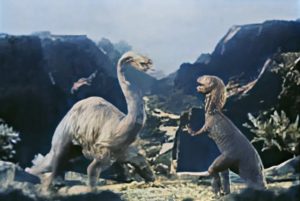
The Lost World (1925) Colorized • Brontosaurus vs. Allosaurus
The advancements in visual effects technology from the 1970s to present day have revolutionized the film industry and transformed the way we experience movies. With the introduction of computer-generated imagery (CGI) in the 1980s, filmmakers gained access to a vast array of new tools and techniques for creating stunning and immersive visual effects.
One of the most influential films in this regard was Star Wars (1977). That film featured groundbreaking SFX that set a new standard for sci-fi filmmaking. In our breakdown of how they shot Star Wars, we learn just how complicated it was to create elements like the aerial space battles.
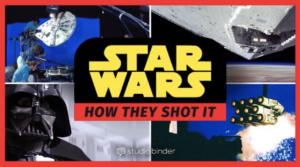
How They Shot Star Wars • Special effects examples
The film’s use of miniatures, matte paintings, and practical effects combined with innovative motion control cameras paved the way for future advancements in visual effects.

Star Wars (1977) SFX
In the 1990s, films like Jurassic Park (1993) demonstrated how CGI could be used to create realistic-looking creatures on screen. The film’s use of animatronics and CGI allowed audiences to believe that dinosaurs were once again roaming the earth.
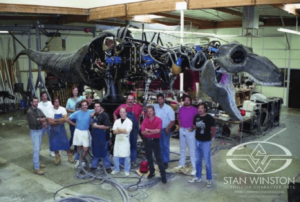
Jurassic Park Animatronics • Special effects in movies
More recently, Avatar (2009) pushed the boundaries of what was possible with CGI by creating an entirely new world with photorealistic creatures and environments. The film’s use of motion capture technology also allowed actors to bring their performances to life in ways never before seen on screen.

How James Cameron Evolved Motion Capture in the Avatar Films • Subscribe on YouTube
Today, filmmakers continue to push the limits of visual effects technology. Films like Avengers: Endgame (2019) feature massive battle scenes involving hundreds of characters seamlessly integrated through CGI. As technology continues to advance, it’s exciting to think about what groundbreaking films may be just around the corner.
RELATED POSTS
WHAT ARE SPECIAL EFFECTS IN FILM USED FOR?
Role of Special Effects in Storytelling
Special effects have the power to enhance a film’s narrative and emotional impact by creating a more immersive and engaging experience for audiences. When used effectively, SFX can help to bring a filmmaker’s vision to life on screen, allowing viewers to connect with characters and storylines in new and exciting ways.
One way that SFX can enhance a film’s narrative is by creating a sense of realism or otherworldliness that draws viewers into the story. For example, in Gravity (2013), the use of CGI helped to create the illusion of weightlessness and danger in outer space. This, in turn, makes the audience feel as though they were right there alongside the characters.
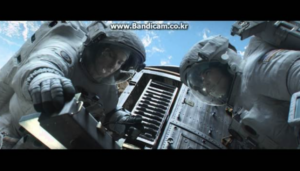
Gravity scene-Explorer gets hit by debris
SFX can also be used to heighten emotional impact by adding visual cues that reinforce key themes or ideas within the story. In Eternal Sunshine of the Spotless Mind (2004), for example, the dreamlike sequences featuring surreal imagery. They help to convey the fragmented memories and emotions of the main character as he tries to hold onto his relationship with Clementine.
In this scene, particularly, keep an eye on the books surrounding Joel and Clementine, how they change and how it adds the emotional impact.
Eternal Sunshine of the Spotless Mind Cinematic SFX
Another way that SFX can enhance a film’s emotional impact is through their ability to create spectacle and awe-inspiring visuals. In films like The Lord of The Rings: The Return of The King (2003) elaborate set pieces and stunning visual effects serve not only as eye candy but also as powerful storytelling tools that leave audiences feeling awed and inspired.
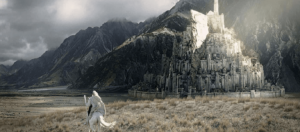
The Lord of The Rings: The Return of The King (2003)
From practical effects to CGI and motion capture technology, filmmakers now have an unprecedented range of tools at their disposal for creating immersive and emotionally impactful visual experiences.
WHAT ARE SPECIAL EFFECTS ADVANCEMENTS IN FILM?
The Future of Special Effects
As technology continues to advance at a rapid pace, the future of SFX in film is looking more exciting than ever. With these technological advancements, filmmakers are exploring new ways to create immersive and emotionally impactful visual experiences for audiences.
One major innovation is the use of virtual reality and augmented reality to create immersive experiences that blur the lines between the real and digital worlds.
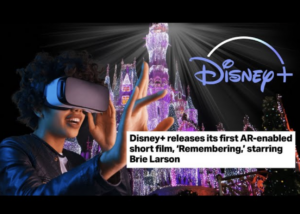
Disney+ first AR-enabled short film, ‘Remembering’
Motion capture technology has also advanced significantly in recent years, allowing filmmakers to capture more detailed performances from actors that can then be translated into stunning effects on screen.
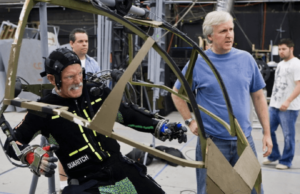
Underwater Motion Capture for Avatar Sequel
The use of practical effects will always have its place in filmmaking. But with the rise of CGI and motion capture technology, the possibilities for creating stunning visuals that push the boundaries of what is possible are endless.
With these emerging technologies and techniques, the future of special effects looks bright as filmmakers continue to explore new ways to create unforgettable visual experiences for audiences.
When used effectively, SFX can help to bring a filmmaker’s vision to life on screen, enhance a film’s narrative and emotional impact, and leave audiences feeling awed and inspired. As technology continues to advance, it will be exciting to see how filmmakers continue to push the boundaries of what is possible with effects in the years ahead.
UP NEXT
Practical Effects in Film
As we mentioned above, practical effects are achieved in a variety of incredible ways involving different crafts and principles. For a deeper dive into practical effects in film, check out our next article.

